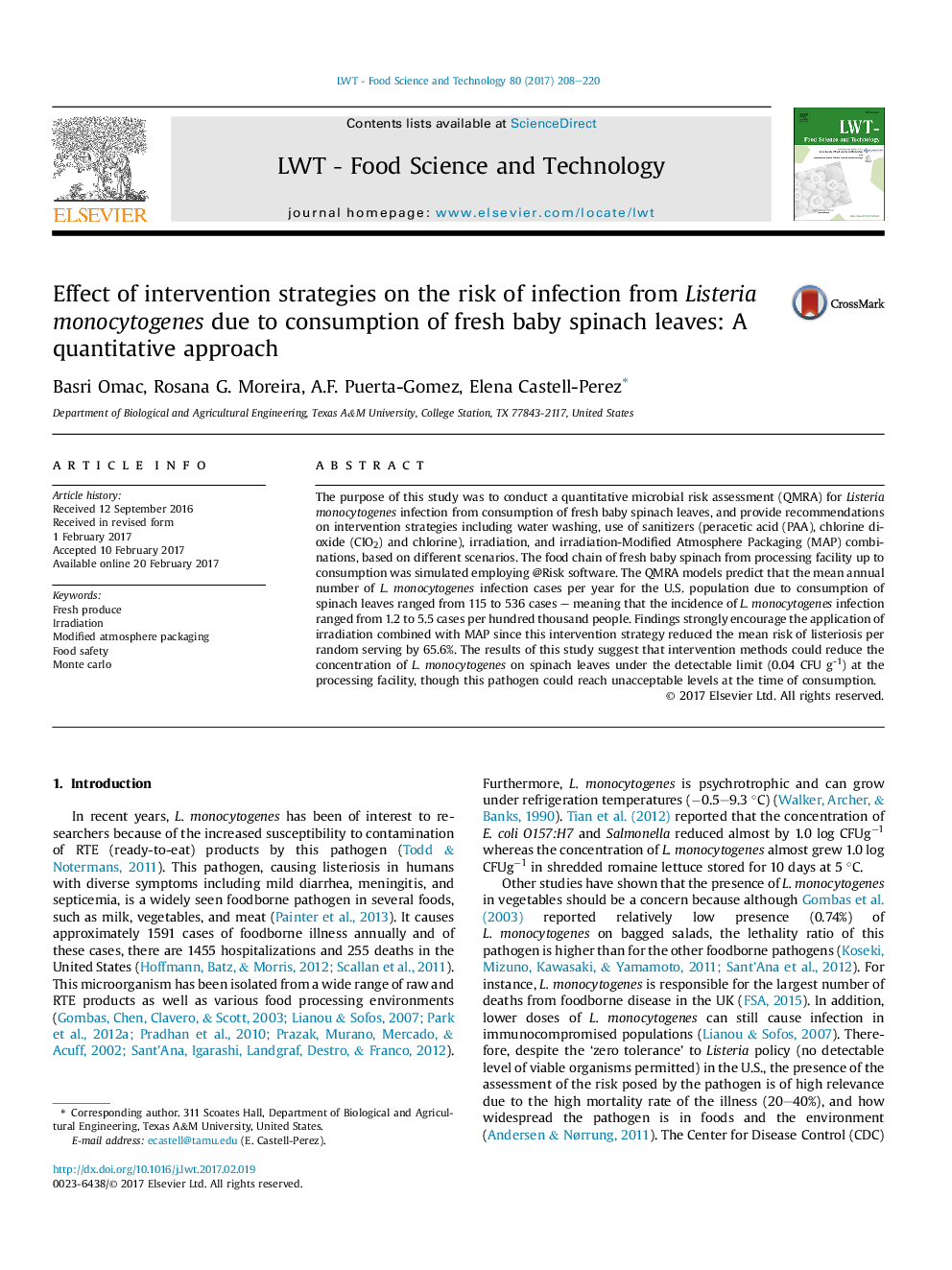| کد مقاله | کد نشریه | سال انتشار | مقاله انگلیسی | نسخه تمام متن |
|---|---|---|---|---|
| 5768538 | 1628518 | 2017 | 13 صفحه PDF | دانلود رایگان |
- Quantitative risk assessment modeling helps to assess occurrence of L. monocytogenes in fresh spinach.
- Irradiation with modified atmosphere packaging reduces L. monocytogenes infection cases.
- Low-dose irradiation and cold chain distribution ensures a safe fresh produce.
The purpose of this study was to conduct a quantitative microbial risk assessment (QMRA) for Listeria monocytogenes infection from consumption of fresh baby spinach leaves, and provide recommendations on intervention strategies including water washing, use of sanitizers (peracetic acid (PAA), chlorine dioxide (ClO2) and chlorine), irradiation, and irradiation-Modified Atmosphere Packaging (MAP) combinations, based on different scenarios. The food chain of fresh baby spinach from processing facility up to consumption was simulated employing @Risk software. The QMRA models predict that the mean annual number of L. monocytogenes infection cases per year for the U.S. population due to consumption of spinach leaves ranged from 115 to 536 cases - meaning that the incidence of L. monocytogenes infection ranged from 1.2 to 5.5 cases per hundred thousand people. Findings strongly encourage the application of irradiation combined with MAP since this intervention strategy reduced the mean risk of listeriosis per random serving by 65.6%. The results of this study suggest that intervention methods could reduce the concentration of L. monocytogenes on spinach leaves under the detectable limit (0.04 CFU g-1) at the processing facility, though this pathogen could reach unacceptable levels at the time of consumption.
Journal: LWT - Food Science and Technology - Volume 80, July 2017, Pages 208-220
